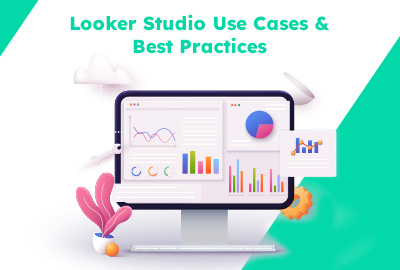Looker Studio is a powerful business intelligence tool that enables businesses to make data-driven decisions with ease. With Looker Studio, you can analyze, visualize, and share data across your organization. However, to maximize the value of Looker Studio, you need to understand how to use it effectively. In this article, we will explore some use cases and best practices for getting the most out of Looker Studio.
Looker Studio Use Case 1: Sales Analytics
Looker Studio can help you to gain insights into your sales performance. With Looker Studio, you can track your sales funnel from lead generation to deal closure. You can also analyze your customer’s behavior, such as what products they buy, how frequently they purchase, and what channels they use to make purchases. By using Looker Studio to analyze your sales data, you can identify trends and patterns that can help you to make data-driven decisions to improve your sales performance.
Best Practice: To get the most out of Looker Studio for sales analytics, start by defining your sales KPIs. Determine which metrics are critical to your sales process, such as lead conversion rate, win rate, and average deal size. Then, use Looker Studio to create dashboards and reports that visualize these metrics. Share these reports with your sales team so that they can track their performance and identify areas for improvement.
Looker Studio Use Case 2: Marketing Analytics
Looker Studio can also help you to gain insights into your marketing performance. With Looker Studio, you can track your marketing campaigns and analyze their effectiveness. You can also use Looker Studio to analyze your website traffic, such as where your visitors are coming from, what pages they are visiting, and how long they are staying on your site. By using Looker Studio to analyze your marketing data, you can identify which campaigns are driving the most traffic and conversions and adjust your marketing strategy accordingly.
Best Practice: To get the most out of Looker Studio for marketing analytics, start by defining your marketing KPIs. Determine which metrics are critical to your marketing performance, such as conversion rate, cost per lead, and ROI. Then, use Looker Studio to create dashboards and reports that visualize these metrics. Share these reports with your marketing team so that they can track their performance and identify areas for improvement.
Looker Studio Use Case 3: Financial Analytics
Looker Studio can also help you to gain insights into your financial performance. With Looker Studio, you can track your revenue, expenses, and profitability. You can also analyze your financial data to identify trends and patterns that can help you to make data-driven decisions to improve your financial performance.
Best Practice: To get the most out of Looker Studio for financial analytics, start by defining your financial KPIs. Determine which metrics are critical to your financial performance, such as revenue growth rate, gross profit margin, and EBITDA. Then, use Looker Studio to create dashboards and reports that visualize these metrics. Share these reports with your finance team so that they can track their performance and identify areas for improvement.
Looker Studio Use Case 4: Supply Chain Analytics
Looker Studio can also help you to gain insights into your supply chain performance. With Looker Studio, you can track your inventory levels, supplier performance, and shipping times. You can also use Looker Studio to analyze your logistics data, such as transportation costs, delivery times, and freight volume. By using Looker Studio to analyze your supply chain data, you can identify areas where you can optimize your supply chain processes and reduce costs.
Best Practice: To get the most out of Looker Studio for supply chain analytics, start by defining your supply chain KPIs. Determine which metrics are critical to your supply chain business like freight volumes or delivery times. Then create the visualization using looker studio to give more prominence to your key KPIs.
Industries That Can Benefit from Looker Studio:
- E-commerce: Looker Studio can help e-commerce businesses analyze their sales and marketing performance, track customer behavior and preferences, and optimize their website and product offerings for better customer experiences.
- Healthcare: Looker Studio can help healthcare businesses analyze patient data, track treatment outcomes, and improve operational efficiency.
- Financial Services: Looker Studio can help financial services businesses analyze financial data, track investment performance, and comply with regulatory requirements.
- Manufacturing & Supply Chain: Looker Studio can help manufacturing businesses analyze production data, track supply chain performance, and optimize operational processes.
- Education: Looker Studio can help education businesses analyze student data, track academic performance, and optimize teaching and learning processes.
Conclusion
Looker Studio is a powerful business intelligence tool that can help businesses make data-driven decisions. By leveraging Looker Studio’s various features and capabilities, businesses can gain insights into their performance and operations that can help them optimize and improve their processes. Looker Studio is a versatile tool that can be used across various industries and use cases, making it a smart investment for businesses. Learn more about customizing Looker Studio for your specific business needs.
Unlock the full potential of Looker Studio with tailored solutions from our Looker Studio Services.





0 Comments